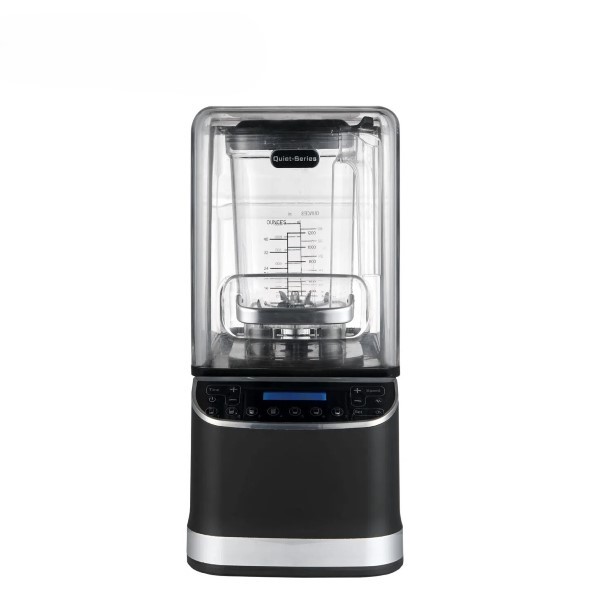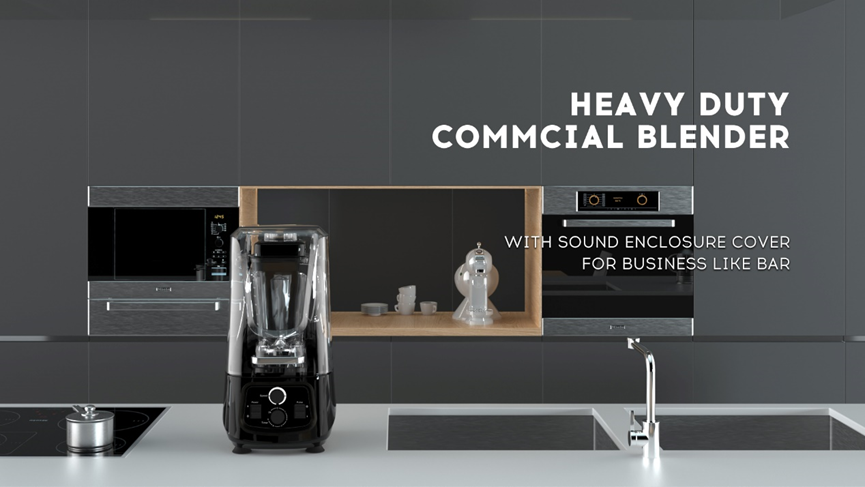Top Features to Look for in a Heavy Duty Food Blender from China
release time:
2025-06-06
Top Features to Look for in a Heavy Duty Food Blender from China
When it comes to kitchen appliances, a heavy-duty food blender stands out as a versatile tool that can significantly enhance your culinary experience. Whether you are blending smoothies, soups, sauces, or even crushing ice, the right blender can make all the difference. In this article, we will delve into the top features to consider when choosing a heavy-duty food blender from China, ensuring that you make an informed decision.
Table of Contents
1. Power and Performance
2. Blade Quality and Design
3. Capacity and Size
4. Speed Settings and Controls
5. Durability and Build Quality
6. Ease of Use and Cleaning
7. Noise Levels
8. Warranty and Customer Support
9. Conclusion
10. FAQs
1. Power and Performance
The **power** of a food blender is a critical factor to consider before making a purchase. Generally, a heavy-duty blender should have a motor with a wattage of at least **1000 watts**. Higher wattage translates to more efficient blending, allowing you to mix tougher ingredients like frozen fruits, nuts, and vegetables with ease.
Performance also encompasses the blender’s ability to maintain a consistent speed even when blending dense mixtures. Look for models that offer **peak horsepower** ratings, which indicate the maximum power output during heavy blending tasks. Brands from China are known for producing blenders that not only meet but often exceed these requirements, ensuring you have a reliable kitchen companion.
2. Blade Quality and Design
The **blades** of a food blender play a pivotal role in achieving the desired texture and consistency. When choosing a heavy-duty blender, prioritize models equipped with high-quality stainless steel blades. These blades should be designed with a sharp edge to ensure efficient cutting and blending.
Moreover, the **blade configuration** can significantly impact the blending process. Many top-rated Chinese blenders feature a **cross blade design**, which enhances the mixing ability by creating a vortex that draws ingredients down towards the blades. This design helps to achieve smoother blends, making it perfect for soups and sauces.
3. Capacity and Size
The **capacity** of the blender is another essential feature to consider, especially if you often prepare large batches of food. Heavy-duty blenders typically come with containers that can hold anywhere from **1.5 liters to 2.5 liters** or more.
Choose a size that fits your cooking habits — if you are a meal prep enthusiast, a larger capacity may be beneficial. Conversely, for smaller kitchens or occasional use, a compact model may suffice. Additionally, consider the **material** of the blending jar; glass containers are often preferred for their durability and easy cleaning, while BPA-free plastics are also a great lightweight alternative.
4. Speed Settings and Controls
Having **multiple speed settings** allows for greater versatility in your blending tasks. Look for a blender that offers at least **three to five different speeds**, along with a **pulse function**. The pulse feature is particularly useful for achieving the perfect texture without over-blending, especially for chunky salsas or dips.
Some high-end models from China also include **digital controls** or **smart technology**, which can further enhance user experience. These options allow for precise adjustments and often come with preset programs for common tasks like smoothies, soups, or crushing ice, making blending easier and more efficient.
5. Durability and Build Quality
Investing in a heavy-duty food blender means you should expect long-term use. **Durability** is largely influenced by the materials used in construction. A blender with a **robust base** and **high-quality components** can withstand daily wear and tear.
Chinese manufacturers are renowned for their attention to build quality, often employing materials that resist corrosion and wear over time. Look for blenders that feature a **sturdy design** with rubberized feet for stability during operation. A blender that feels solid and well-built will serve you better in the long run.
6. Ease of Use and Cleaning
A blender that is **easy to operate** will save you time and effort in the kitchen. Look for models with intuitive controls that are easily accessible. Additionally, consider how the blender disassembles for cleaning; removable blades and dishwasher-safe components can make cleanup a breeze.
Some blenders also come with **self-cleaning features**. This function allows you to add water and soap to the blending jar and run the blender, effectively cleaning it without requiring disassembly. This is a valuable feature for busy individuals who prioritize convenience.
7. Noise Levels
While power is essential, a noisy blender can be a significant downside. Many heavy-duty blenders can be quite loud during operation, which can be disruptive, especially in smaller households or shared living spaces.
Look for options that include **noise reduction features**. Some manufacturers even offer blenders with sound enclosures that help minimize noise levels during blending. If this is a priority for you, pay attention to user reviews regarding noise performance.
8. Warranty and Customer Support
A robust **warranty** is a good indicator of a manufacturer’s confidence in their product. Most high-quality blenders will come with a warranty ranging from **one to seven years**. It’s advisable to choose a product that offers a longer warranty period, as this typically indicates better build quality and reliability.
Additionally, assess the **customer support** provided by the manufacturer. Good customer service can be invaluable if you encounter issues or require assistance with your blender. Look for brands that offer easy access to support, including live chat, email, or a customer hotline.
Conclusion
Choosing the right heavy-duty food blender from China can significantly enhance your cooking experience, allowing you to explore new recipes and techniques with ease. By focusing on the key features outlined in this guide — power and performance, blade quality, capacity, speed settings, durability, ease of use, noise levels, and warranty — you can make an informed decision that aligns with your culinary needs.
Investing in a quality blender tailored to your requirements will not only improve your efficiency in the kitchen but also inspire creativity in your cooking endeavors. Embrace the power of a heavy-duty food blender and elevate your culinary skills to new heights.
FAQs
1. What is the ideal wattage for a heavy-duty food blender?
The ideal wattage for a heavy-duty food blender is typically at least 1000 watts, as this provides sufficient power for blending tough ingredients.
2. Are stainless steel blades better than plastic blades?
Yes, stainless steel blades are generally more durable and effective at cutting and blending compared to plastic blades, making them a superior choice for heavy-duty blenders.
3. How do I clean my heavy-duty blender easily?
Many modern blenders offer self-cleaning features. Alternatively, you can fill the jar with warm water and a drop of dish soap, then blend for a few seconds before rinsing.
4. Is a larger capacity blender better for meal prep?
Yes, a larger capacity blender is more suitable for meal prep, as it can accommodate larger batches of ingredients, saving you time and effort.
5. What should I look for in warranty coverage?
Look for a warranty that lasts at least one year, with coverage for parts and labor. A longer warranty often indicates better product reliability.
More information






